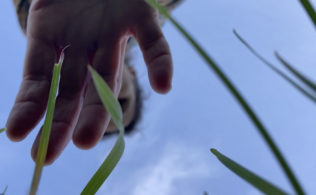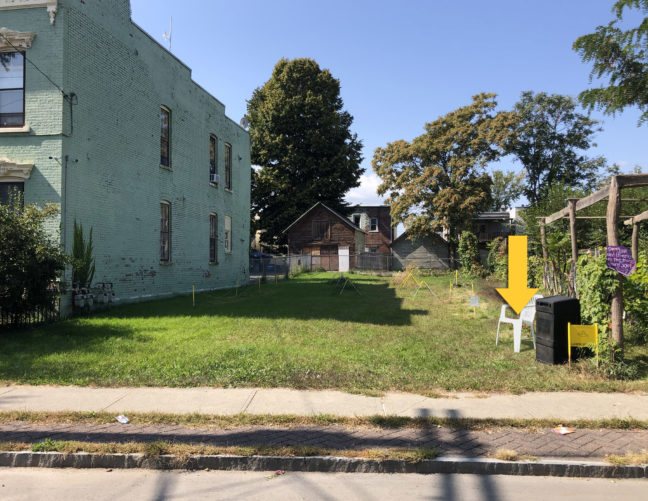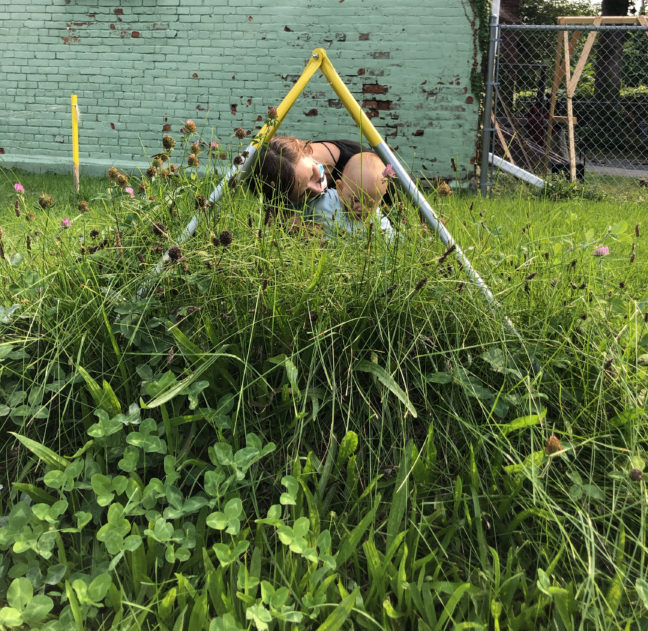

Lawn Lab is sleeping for the winter! Check out our video tour for a taste of this fall’s fieldwork.
How to Participate in our Fall 2020 Audio Tour?
-
- What: The audio tour linked below provides a thirty minute multisensorial fieldwork experience for the fall season of the Lawn Re-Disturbance Laboratory. Break the (phyto)social distance before the plants sleep for the winter!
- Where: The tour is best experienced on site at 3333 Sixth Avenue in Troy, NY, part of the environmental education campus at NATURE Lab. See the photo with the yellow arrow for the exact starting location!
- How: The tour is designed to be listened to on a mobile device using headphones. Click the button below to begin. The tour is not physically demanding, but it will ask you to walk, stand, and sit or kneel on the lawn.
- Also: When you complete the tour, please send your plant portraits, mailing address, and any comments to ellieirons@gmail.com. I’ll send you some mail art in response?? If you want to know more about the plot you interacted with, see this info sheet.
You can also download the MP3 or listen on SoundCloud.

The Lawn (Re)Disturbance Laboratory is an ongoing art-science experiment now in its third season. A project of the Next Epoch Seed Library, it involves re-wilding interventions in institutional and residential lawns from seeds lying dormant in the soil. From plant-based sculptures and community science workshops to novel approaches to data collection and presentation, the project offers multiple entry points through which to consider lawn habitats and their impacts on the communities—human and nonhuman—who live in and among them. The plots here on this lawn display a range of approaches to rewilding in collaboration with spontaneous, wild-growing, feral, and cultivated plants. You can learn more about the treatments for each plot on the reverse side of this sheet, and more about project on the main project page.
You can learn more about the benefits and risks of wild urban nature in this short article: “Accidental urban oases,” and more about Lawn Lab and ecosocial art in this media essay: “A Public Experiment in Collaboration with Seeds, Time, and Weeds”